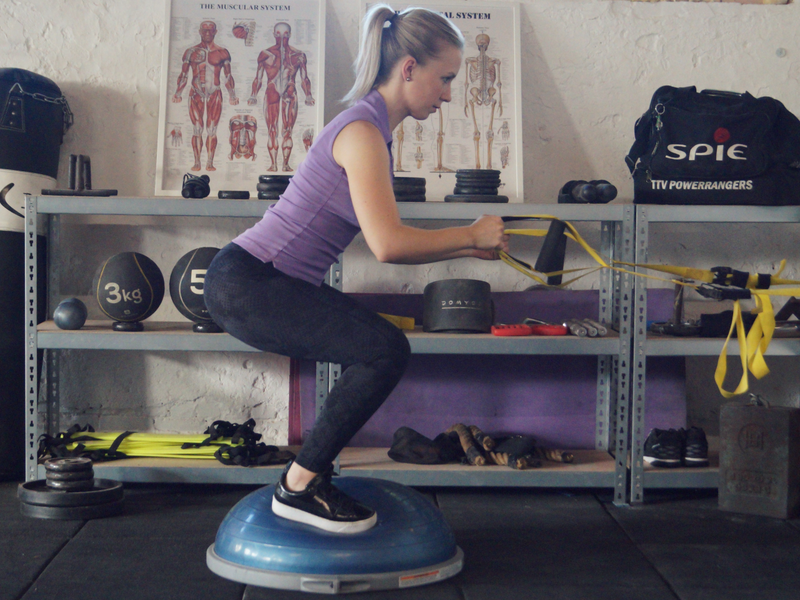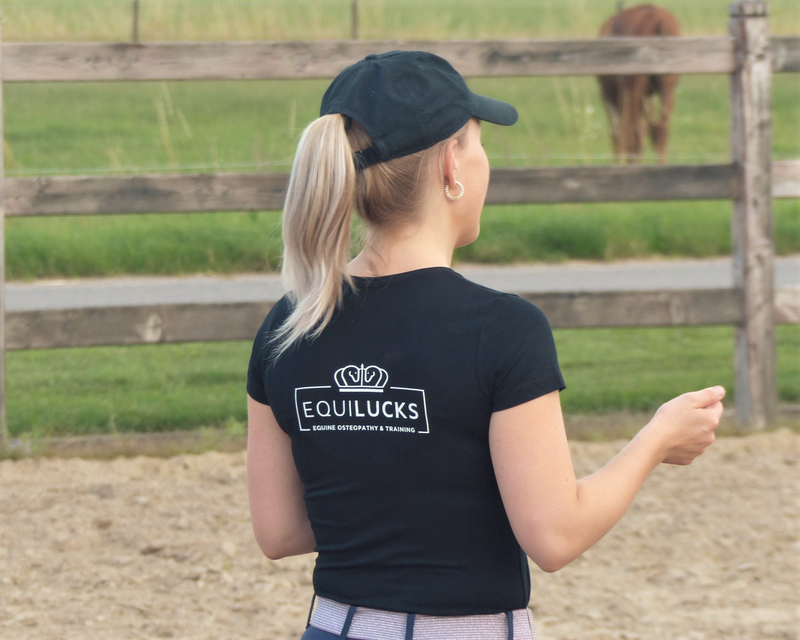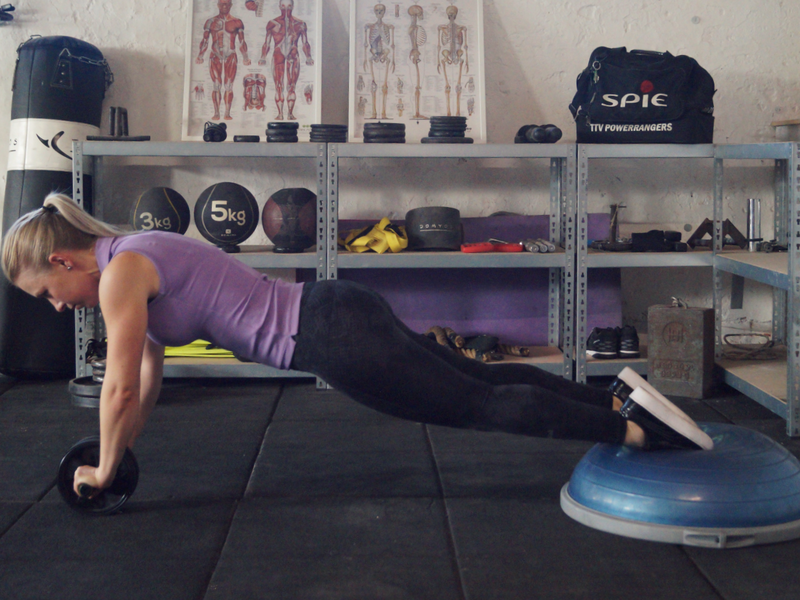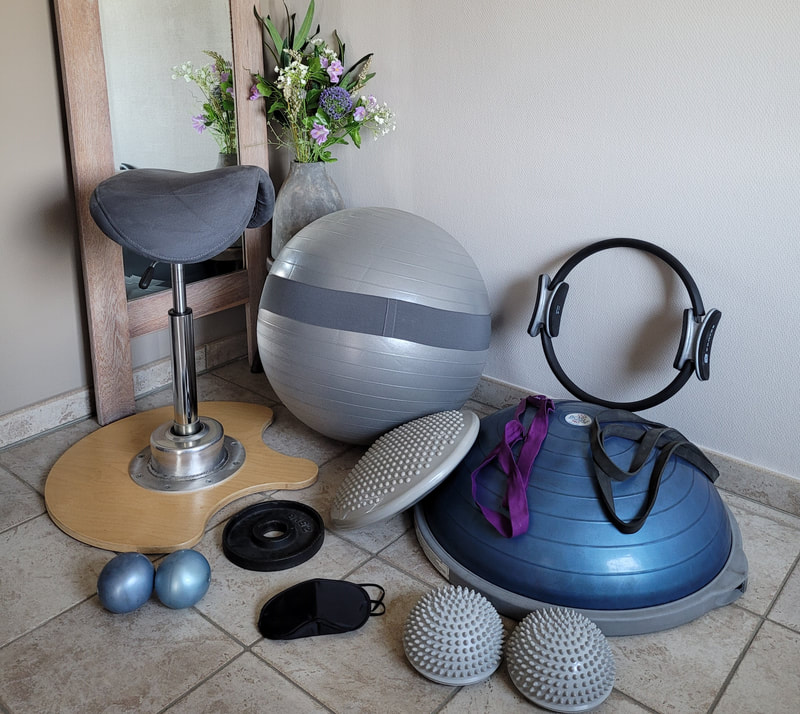TRAINING
A horse and rider in balance are able to perform at their best together. In addition to an osteopathic treatment at least one or twice a year to solve any internal tension and restricted motion, correct training is important to maintain a balanced state and thus to enjoy long-term results. EQUILUCKS distinguishes itself by looking at both rider and his/her horse(s) and trying to find any possible connections between the horse its issues and any weak links or imbalances of the rider. Together, keeping the multidisciplinary approach in mind, osteopathy and correct training enable the horse and its rider to perform at higher levels.
HORSE
Horses could develop during their lifetime some form of crookedness. For example, like in humans, this can be caused by lateralised behaviour or can be a result of a trauma or visceral tension. When saddle broken, many horses have a side which it favours when working on a circle. Taking into account the above-mentioned, as well as potential crookedness of the saddle and/or rider and incorrect training, the crookedness of the horse could evolve over time into a more severe form, affecting locomotion due to the greater impact of uneven loading patterns on the legs. This will lead to stress and tension in both body and mind of the horse, impeding progress and stability in every aspect of the training of the horse. Subsequently, obvious muscle imbalance, lameness, overuse injuries, behavioural issues, etc. could arise, negatively impacting the equine performance.
Straightness is visually achieved when the horse is travelling with the shoulders directly in front of the hindquarters. This requires a well-balanced horse which is able to bend and flex equally well throughout his entire body and in both directions, requiring the proper use of its joints and soft tissue.
Because a straight horse which is able to control his body and legs is likely to be more sound than a crooked horse, it is important that every horse is examined as an individual in order to be able to identify the horse’s preferential rotation and the true cause of its asymmetry. Only then correct and efficient exercises can be given to improve the horse's balance and so overall performance.
Straightness is visually achieved when the horse is travelling with the shoulders directly in front of the hindquarters. This requires a well-balanced horse which is able to bend and flex equally well throughout his entire body and in both directions, requiring the proper use of its joints and soft tissue.
Because a straight horse which is able to control his body and legs is likely to be more sound than a crooked horse, it is important that every horse is examined as an individual in order to be able to identify the horse’s preferential rotation and the true cause of its asymmetry. Only then correct and efficient exercises can be given to improve the horse's balance and so overall performance.
Rider
Before you are able to successfully ride your horse in balance, you must be able to properly balance yourself. To be balanced, you need to have a correct riding position and use your muscles correctly and effectively in both static and dynamic situations in order to maintain a centred alignment over the horse’s centre of gravity, which is located right where you sit in the saddle. If you are not able to have control over your balance, you are not able to have control over your horse’s balance. Instead, the horse has to concentrate on balancing you. Consequently, this could lead to dysfunctions/lesions in both your horse and yourself.
Just as we train horses, it is important that riders also spend time to train their own bodies in order to become a better rider. Hence, after looking for weak links in the body, we will focus on a training program that enhances your ability and performance as a rider. With the right exercises, many injuries caused by strain, fatigue, muscle imbalance or trauma can be avoided or at the very least minimised.
To provide you with even better guidance in further improving your posture and balance in the saddle, you can now also contact Equilucks for training sessions with the Flexchair. This can be done individually, but also in group (for example for a group of clients, a clinic/workshop, ...). You improve your sitting balance & posture by working on, among other things, your core stability and the coordination between your back, pelvis and hips. This will allow you to work more refined with your horse by working on smaller and quieter aids, but also to sit more balanced in the saddle (for example during side gaits, sitting trot, over the jump, ...). Not only better for your horse's back, but also for your own back as you learn to use your back better & more efficiently and thus reduce/prevent pain complaints and injuries.
Just as we train horses, it is important that riders also spend time to train their own bodies in order to become a better rider. Hence, after looking for weak links in the body, we will focus on a training program that enhances your ability and performance as a rider. With the right exercises, many injuries caused by strain, fatigue, muscle imbalance or trauma can be avoided or at the very least minimised.
To provide you with even better guidance in further improving your posture and balance in the saddle, you can now also contact Equilucks for training sessions with the Flexchair. This can be done individually, but also in group (for example for a group of clients, a clinic/workshop, ...). You improve your sitting balance & posture by working on, among other things, your core stability and the coordination between your back, pelvis and hips. This will allow you to work more refined with your horse by working on smaller and quieter aids, but also to sit more balanced in the saddle (for example during side gaits, sitting trot, over the jump, ...). Not only better for your horse's back, but also for your own back as you learn to use your back better & more efficiently and thus reduce/prevent pain complaints and injuries.
PRICES
Dressage lesson: € 40 / 45 minutes
Flexchair: € 50 / 45 minutes (follow-up sessions € 40 / 45 minutes)
Training program rider (individually or in group): contact me for more information
Workshop/clinic: contact me for more information
Flexchair: € 50 / 45 minutes (follow-up sessions € 40 / 45 minutes)
Training program rider (individually or in group): contact me for more information
Workshop/clinic: contact me for more information




